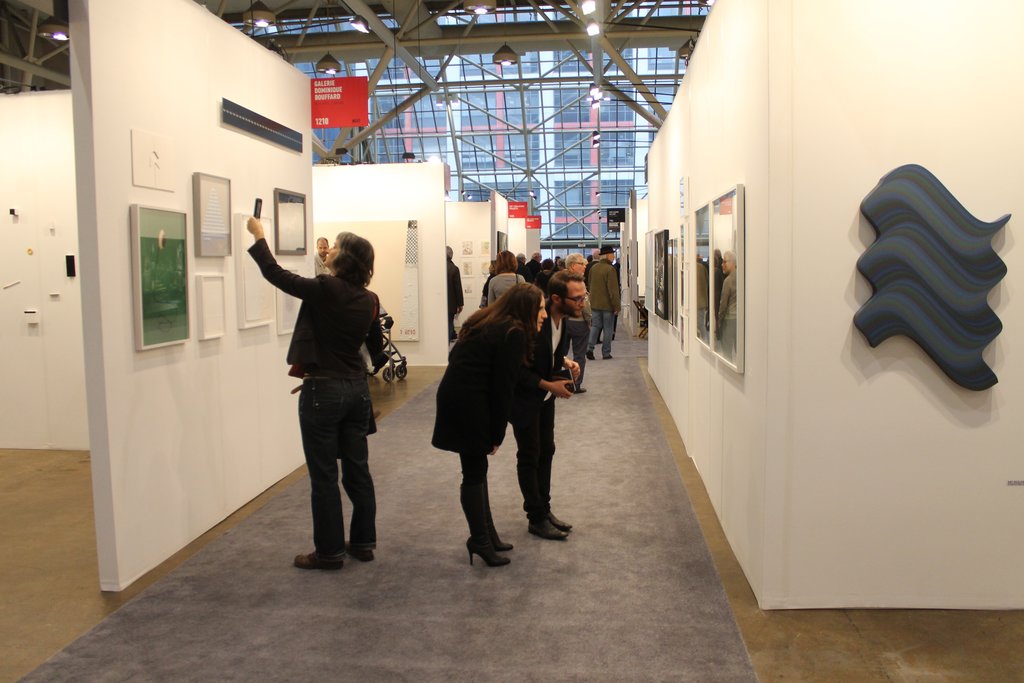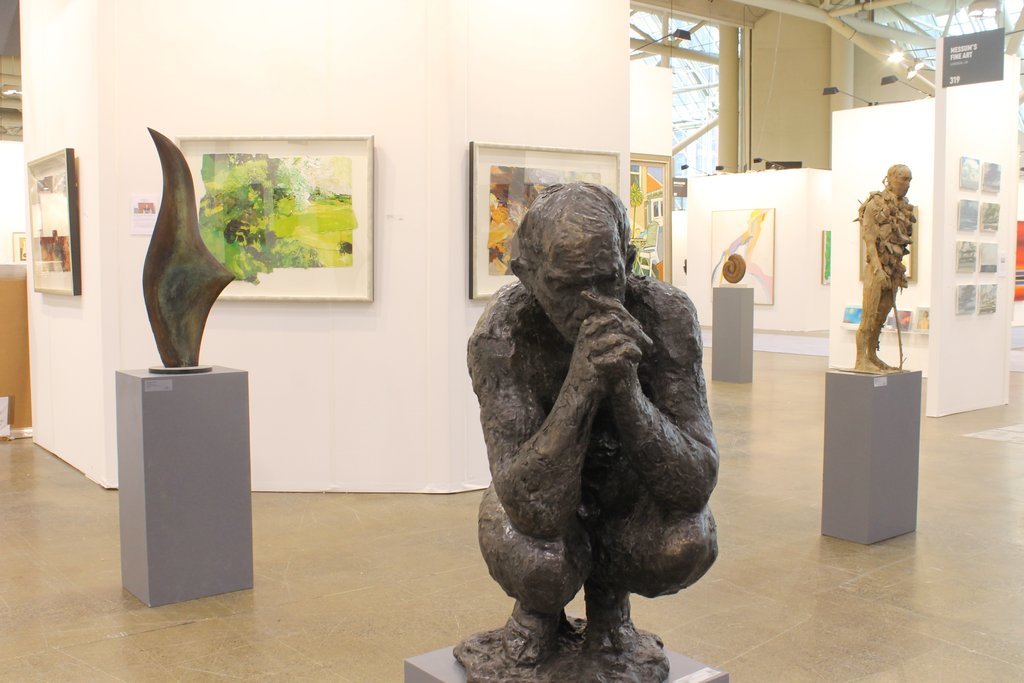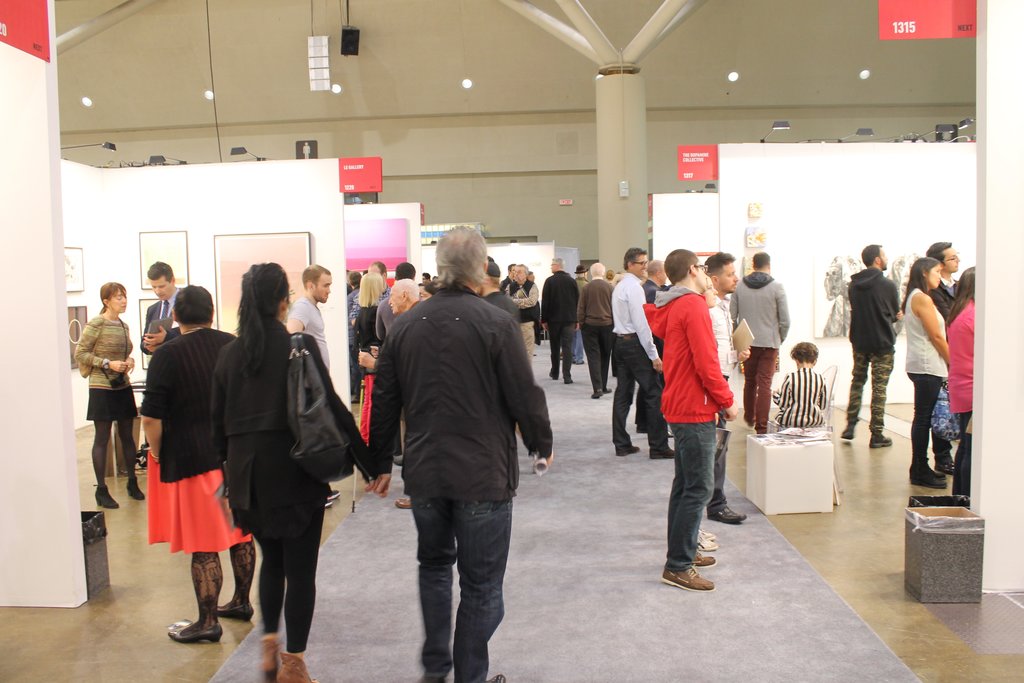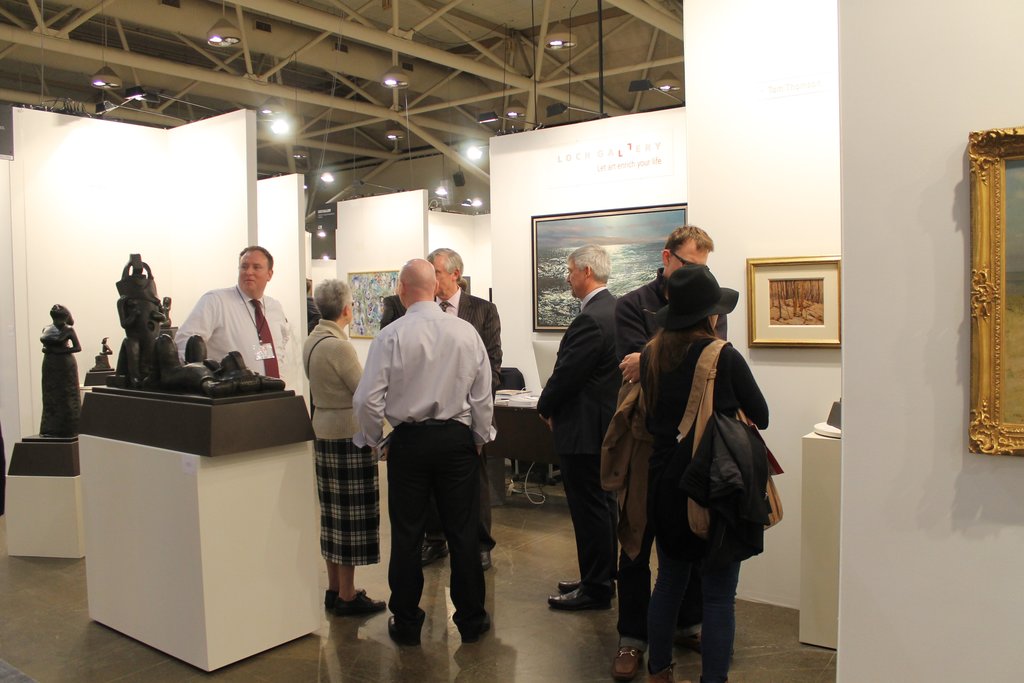Art Toronto, the city’s international art fair hosted at the Metro Toronto Convention Center, opened to the public on October 25th 2013 and closed on October 28th. Founded in 2000, Art Toronto was the first art fair conceived in Canada, and remains the single international contemporary art fair in Canada.
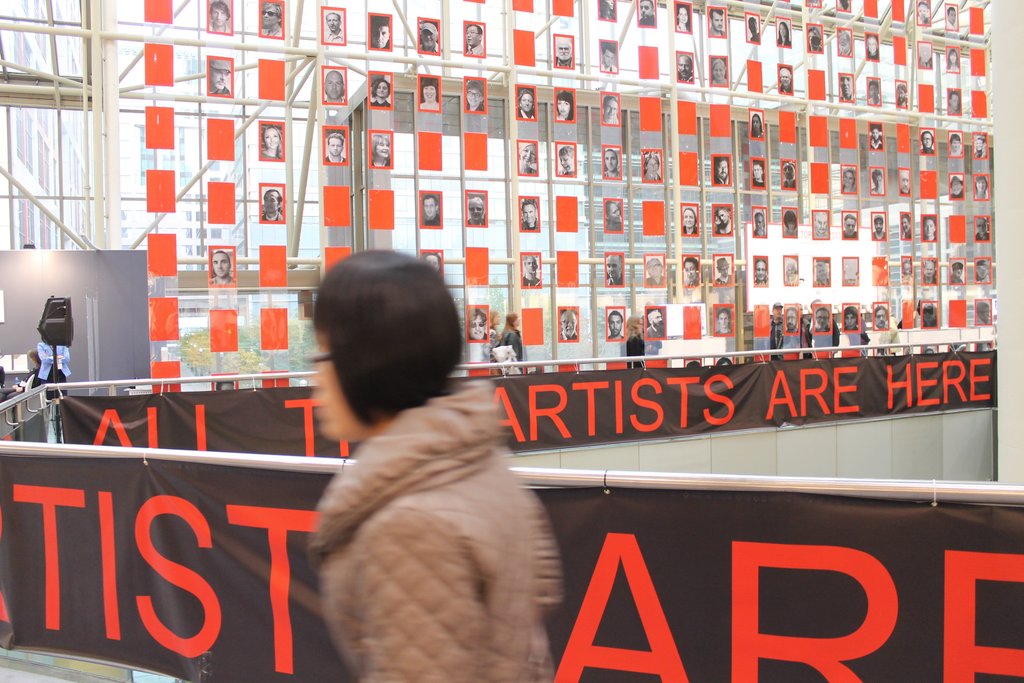 All The Artists Are Here by Thom Sokoloski.
All The Artists Are Here by Thom Sokoloski.
Art fairs within the contemporary context are something new, offering a different kind of social environment within the inherently social art world. With a full season of art fairs around the world, galleries have the opportunity to expand their reach around the world beyond their stationary gallery. The very first art fair was Art Cologne held in 1967, but now art fairs are organized all over the world, the largest of these fairs being Art Basel hosted in Basel, Miami Beach and Hong Kong. Art fairs have contributed to the globalization of the art market with galleries, art dealers, and collectors traveling from fair to fair. Collectors graze through the aisles of gallery booths searching to complete their collections, or at least find the perfect new additions for them.
At Art Toronto, the majority of galleries are Canadian, predominantly from Toronto and Montreal. The most prestigious galleries of Toronto and Montreal occupy the central spaces of the fair. The fair has representation from 14 countries and hosts over 123 exhibitors, including the fair’s cultural partners and publications. Art Toronto’s international exhibitors include several galleries from New York and London, as well as galleries from Tel Aviv, Seoul and Barcelona.
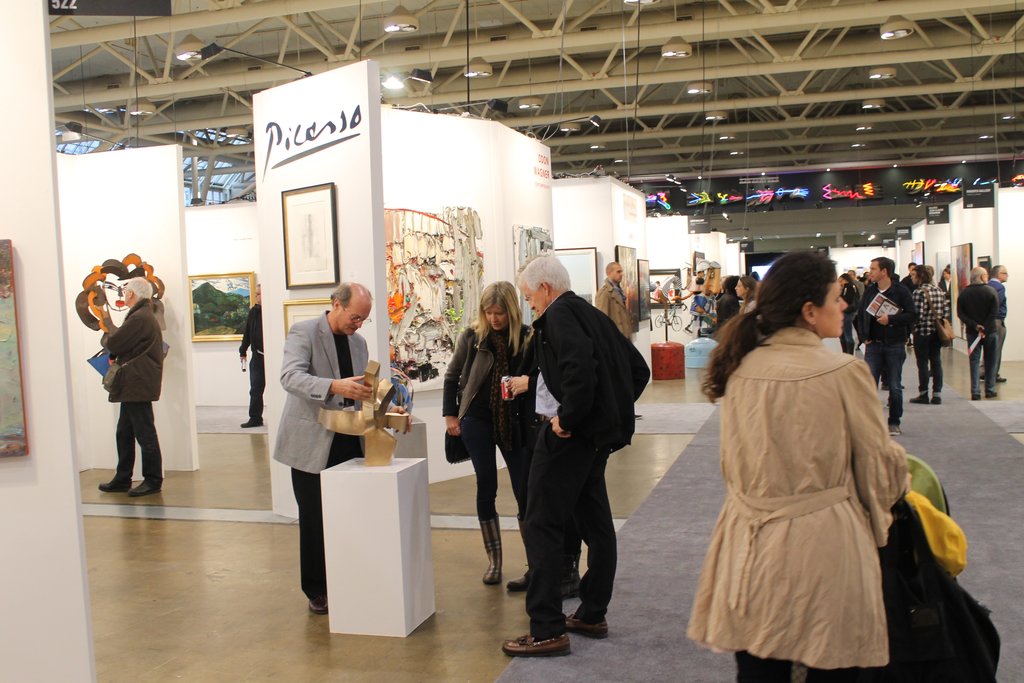 Odon Wagner Contemporary, Toronto
Odon Wagner Contemporary, Toronto
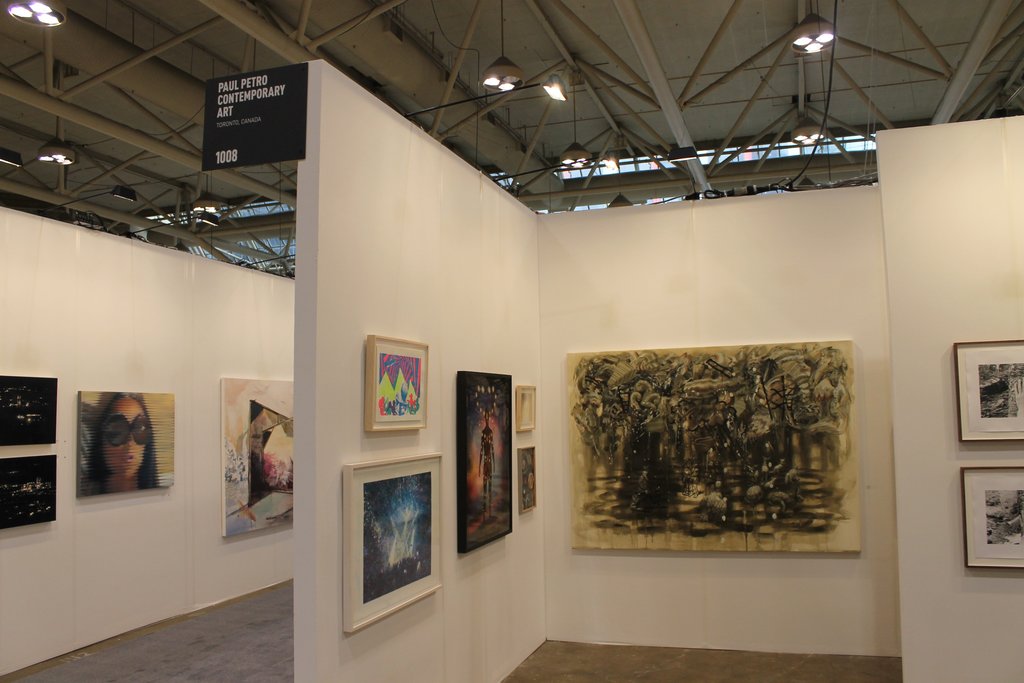 Paul Petro Contemporary Art, Toronto
Paul Petro Contemporary Art, Toronto
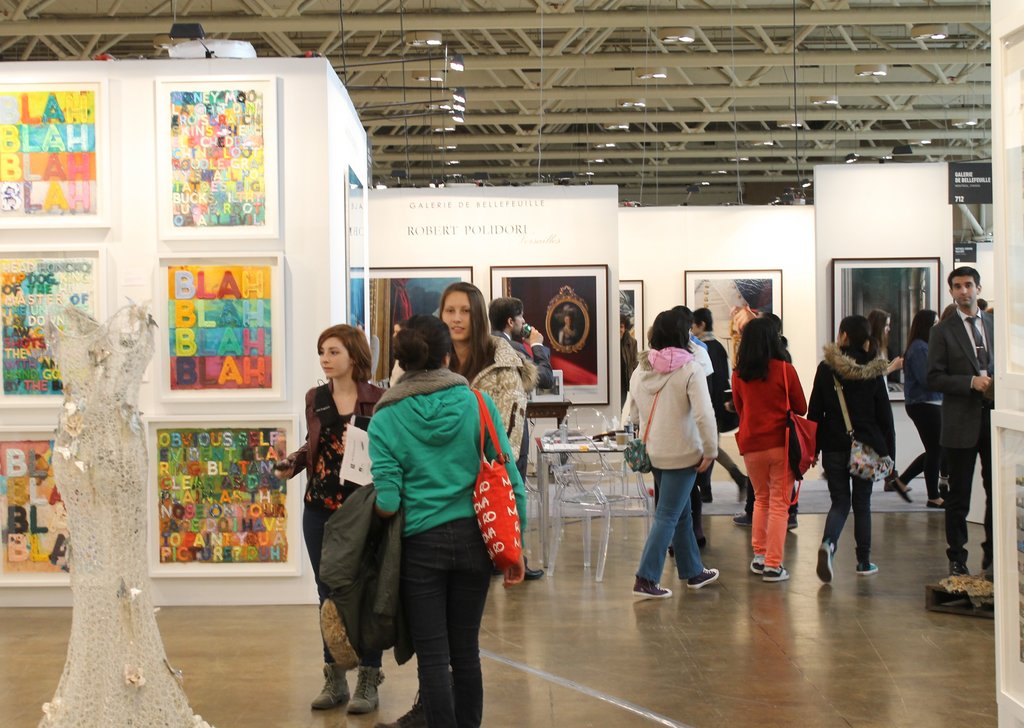 Galerie de Bellefeuille, Montreal
Galerie de Bellefeuille, Montreal
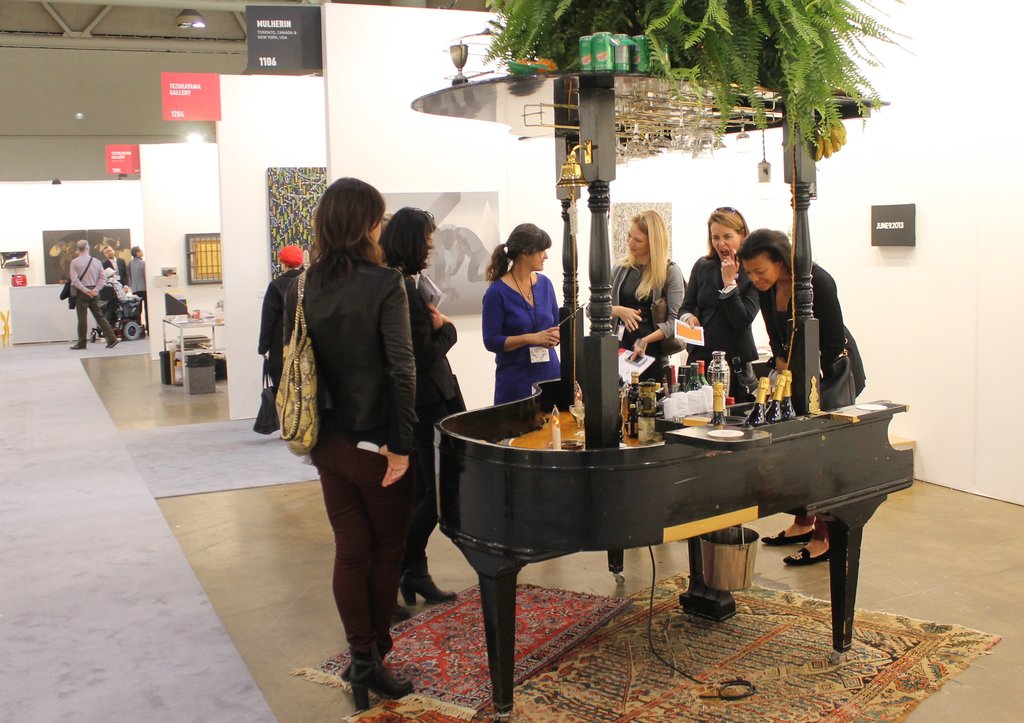 Mulherin, Toronto & New York with Dean Baldwin, Bar Piano
Mulherin, Toronto & New York with Dean Baldwin, Bar Piano
The artists range from the emerging, to mid-career and established artists, from local artists, to artists exhibiting in other parts of the world. The organizers have dedicated a section of the fair to emerging artists, referred to as the NEXT section, indicating the up and coming talents and galleries of the art world, once again with the strongest representation from Toronto and Montreal.
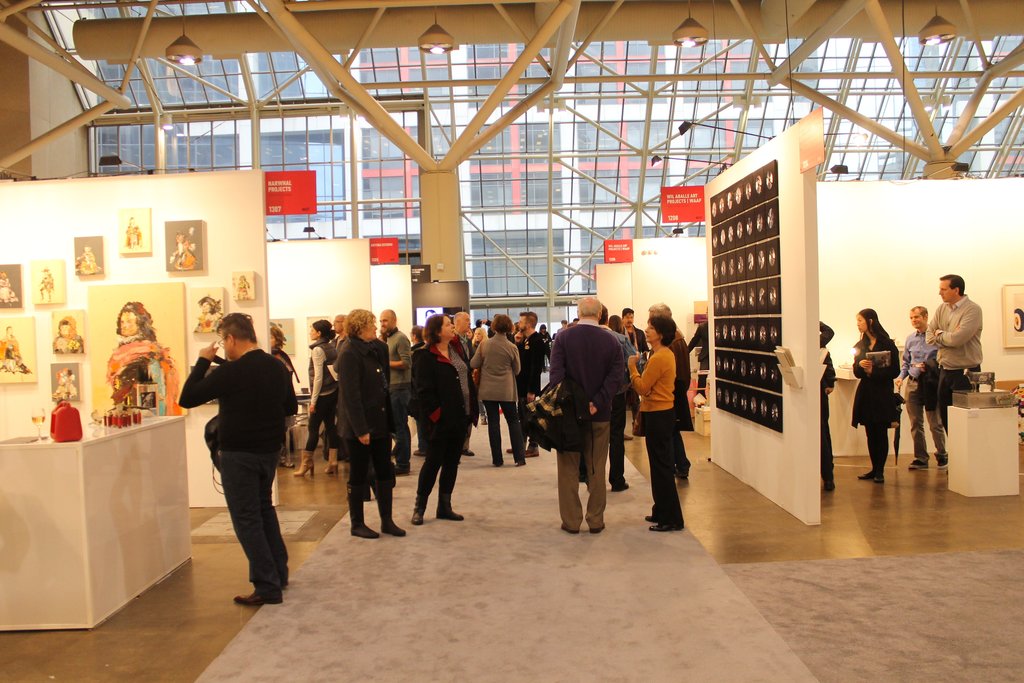 The galleries in NEXT section were designed by red signs
The galleries in NEXT section were designed by red signs
Many of these galleries have only been open for a few years and, for several galleries, this is their first art fair. Will Aballe of Vancouver, a first time participant, opened up his artist collective Will Aballe Art Projects last January. Within this portion of the fair, there appears to be more experimentation with the works on display and their arrangement within the space. Many of the Next exhibitors displayed works executed in a diverse range of media, and had arranged their booths like a contemporary art gallery.
“Blue-Chip” art sales were the buzz of the fair, the term indicates that the prices of the art sold at Art Toronto are increasing. It was reported by Canadian Art that Loch Gallery, a Canadian gallery specializing in Canadian and European historical painting, had $3 million in sales during the VIP reception on Thursday October 24th. These sales at Loch Gallery indicate that the most desired and sought after works are those considered to be Canadian historic paintings rather than contemporary art from emerging artists. Alan Loch believes collectors are attracted to historical work because “Some people are more comfortable spending money on something special rather than taking a chance.”
One of the coordinators of the fair described the different types of collectors that come to Art Toronto: “There are two base of collectors. There are collectors that prefer to only collect historical work because they know they’re going to spend $50,000, and that in 10 years that work is going to be worth more. The other base, are collectors that really like to invest in young artists. They like to take the risk.” As the sales at this art fair have demonstrated, Canadian collectors are most comfortable collecting works considered to be an investment based on their historical significance.
 TrépanierBaer Gallery, Calgary
TrépanierBaer Gallery, Calgary
Contemporary art is challenging to present at an art fair, as much contemporary art defies the way we traditionally look at art. Yves Trépanier, of TrépanierBaer Gallery of Calgary, representing the artist Evan Penny, understands the risk of showing emerging artists at larger art fairs that are dominated by historical art and work created by well known international artists (artists whose work has been exhibited around the world). If galleries are showing emerging Canadian artists at international art fairs outside of Canada, “You’ll crash and burn.” In order for Canadian galleries to compete on the international art market, galleries need to represent major contemporary figures. António Capelão of Bicha Gallery, London, UK, described contemporary art as “fragile.” Although the prices of art are constantly fluctuating, it is becoming increasingly difficult for artists to access the international art world, as the same coordinator of Art Toronto said: “It takes a long time for artists to get to a point where they are considered mid career and established. Sometimes an artist is emerging and then you never here from them again.” For contemporary artists to be acclaimed as established artists, it is essential for artists to receive public recognition before their work can be considered a part of international contemporary art, predestined to be a part of art history and the object of desire for avid collectors.
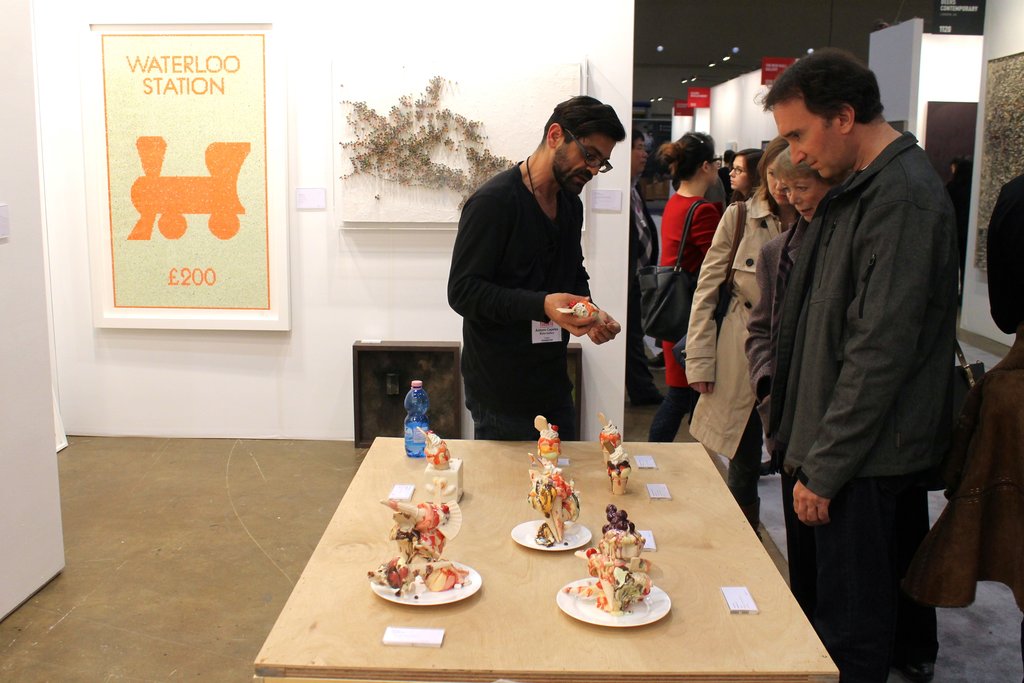 António Capelão (in the middle) of Bicha Gallery, London, UK
António Capelão (in the middle) of Bicha Gallery, London, UK
One way artists can emerge into the eyes of the public are through prizes such the RBC Painting Competition, a prize worth $25,000. The fifteen contestants of this competition had their work hung throughout display of the fair. This year’s winner is Colleen Heslin, an MFA student at Concordia. This competition is one way for artists and art students to gain exposure from collectors and find representation.
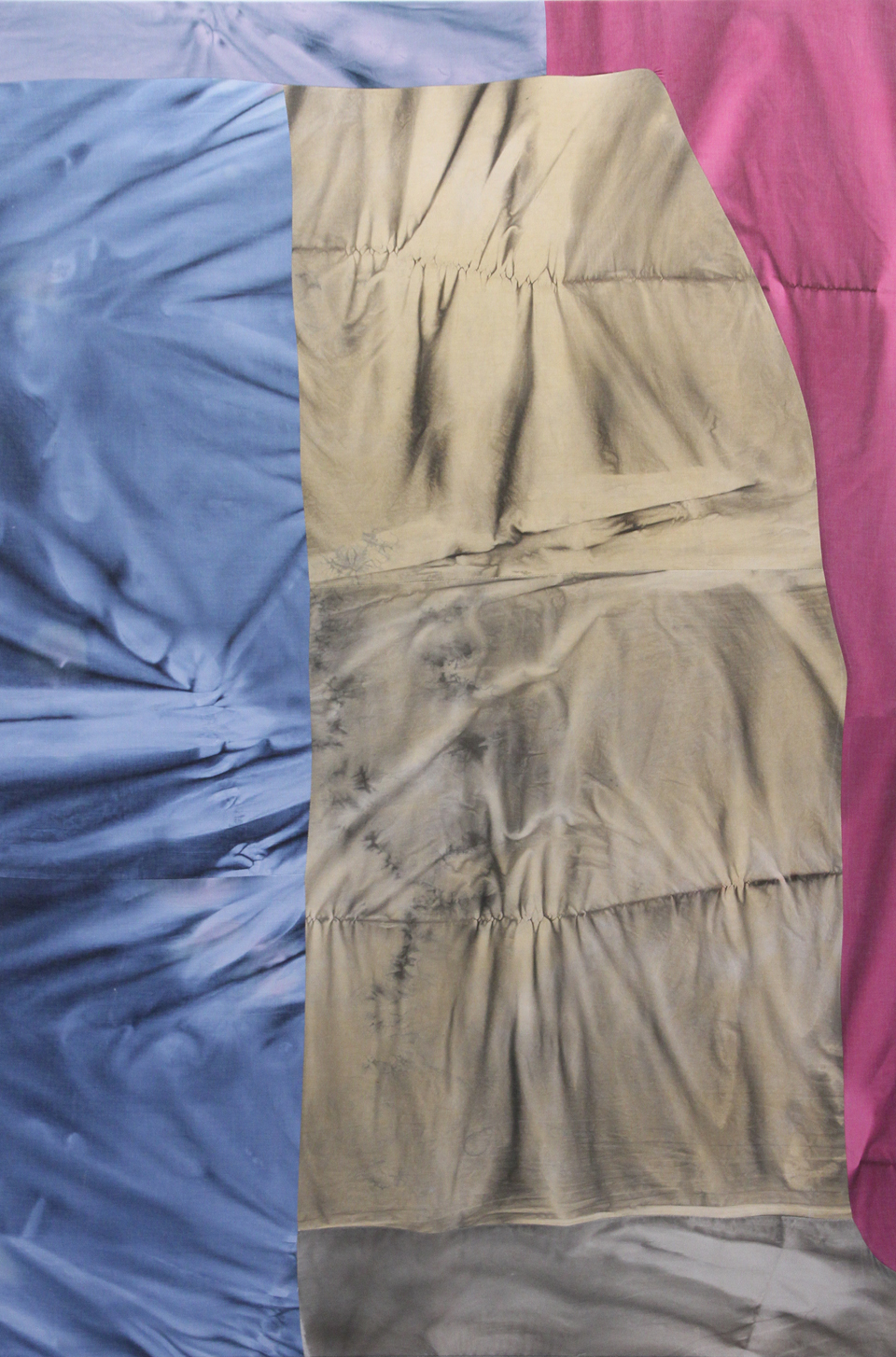 Colleen Heslin, Almost young and wild and free, 2013, ink, dye and acrylic on cotton, 72″ x 48″. Photo: Margaret Irving
Colleen Heslin, Almost young and wild and free, 2013, ink, dye and acrylic on cotton, 72″ x 48″. Photo: Margaret Irving
With the new centrality of art fairs for the social and commercial exchange of the art world, perhaps we are witnessing a shift in the art market within Toronto and Canada. Or rather, these changes at Art Toronto are a reflection of how the art world has globalized and is expanding without borders or limits, with the prices of art sky rocketing without restraints.
Text and photo: Alice Tallman

